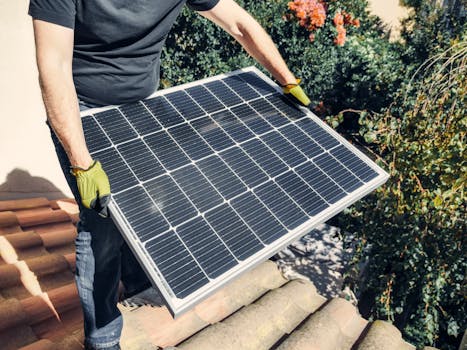
Sustainable Living: Emerging Trends for 2025
Sustainable living is becoming increasingly important as the world grapples with the challenges of climate change, environmental degradation, and social inequality. Sustainable living is about making conscious choices to reduce our impact on the planet and promote a healthier, more equitable world. In this article, we will explore the emerging trends in sustainable living for 2025 and provide tips on how to incorporate these practices into your daily life.
Section 1: Renewable Energy and Green Technology

One of the most significant trends in sustainable living is the shift towards renewable energy sources such as solar, wind, and hydro power. Renewable energy is becoming increasingly cost-competitive with fossil fuels, making it a viable option for households and businesses. Additionally, advancements in green technology such as energy-efficient appliances and smart grids are helping to reduce energy consumption and waste.
Some of the emerging trends in renewable energy and green technology include:
- Solar energy: Solar panels are becoming more efficient and affordable, making them a popular choice for homeowners and businesses.
- Wind energy: Wind turbines are becoming more efficient and quieter, making them a viable option for urban areas.
- Hydro energy: Hydroelectric power plants are being upgraded to increase efficiency and reduce environmental impact.
- Geothermal energy: Geothermal energy is being explored as a viable option for heating and cooling buildings.
Section 2: Zero Waste and Sustainable Consumption

Another significant trend in sustainable living is the shift towards zero waste and sustainable consumption. Zero waste means reducing waste to almost zero by avoiding single-use plastics, composting food waste, and recycling materials. Sustainable consumption involves making conscious choices about the products we buy and use, choosing products with minimal packaging, and buying second-hand or sustainable products.
Some of the emerging trends in zero waste and sustainable consumption include:
- Zero-waste shopping: Consumers are opting for zero-waste shopping by choosing products with minimal packaging and buying in bulk.
- Sustainable fashion: The fashion industry is shifting towards sustainable practices such as using recycled materials, reducing waste, and promoting second-hand clothing.
- Minimalism: Minimalism is becoming a popular lifestyle choice, with people opting for simpler, more sustainable living arrangements.
- Composting: Composting is becoming increasingly popular as a way to reduce food waste and create nutrient-rich soil.
Section 3: Sustainable Transportation and Urban Planning

Sustainable transportation and urban planning are critical components of sustainable living. Sustainable transportation involves using electric or hybrid vehicles, cycling, or walking instead of driving. Urban planning involves designing cities and towns to be more walkable, bikeable, and livable, with green spaces, public transportation, and mixed-use development.
Some of the emerging trends in sustainable transportation and urban planning include:
- Electric vehicles: Electric vehicles are becoming increasingly popular, with many countries investing in electric vehicle infrastructure.
- Cycling infrastructure: Cities are investing in cycling infrastructure such as bike lanes, bike-share programs, and cycling paths.
- Public transportation: Public transportation is becoming more efficient and accessible, with the use of technology such as mobile apps and smart traffic management.
- Green spaces: Cities are incorporating more green spaces such as parks, gardens, and green roofs to improve air quality and mitigate the urban heat island effect.
Section 4: Sustainable Food Systems and Agriculture

Sustainable food systems and agriculture are critical components of sustainable living. Sustainable food systems involve producing, processing, and distributing food in a way that is environmentally sustainable, socially just, and economically viable. Sustainable agriculture involves using practices such as organic farming, permaculture, and regenerative agriculture to promote soil health, biodiversity, and ecosystem services.
Some of the emerging trends in sustainable food systems and agriculture include:
- Organic farming: Organic farming is becoming increasingly popular, with many consumers opting for organic produce.
- Regenerative agriculture: Regenerative agriculture is being explored as a way to promote soil health, biodiversity, and ecosystem services.
- Urban agriculture: Urban agriculture is becoming increasingly popular, with many cities incorporating urban farms and gardens into their planning.
- Food waste reduction: Food waste reduction is becoming a priority, with many organizations and individuals working to reduce food waste and promote sustainable food systems.
Section 5: Sustainable Living Tips and Resources

Making the shift to sustainable living can seem overwhelming, but there are many resources available to help. Here are some tips and resources to get you started:
- Start small: Start with small changes such as reducing energy consumption, using public transportation, or reducing food waste.
- Get involved: Get involved in your community by participating in local sustainability initiatives, joining a community garden, or volunteering for a environmental organization.
- Educate yourself: Educate yourself about sustainable living by reading books, watching documentaries, and taking online courses.
- Support sustainable businesses: Support businesses that prioritize sustainability and environmental responsibility.





